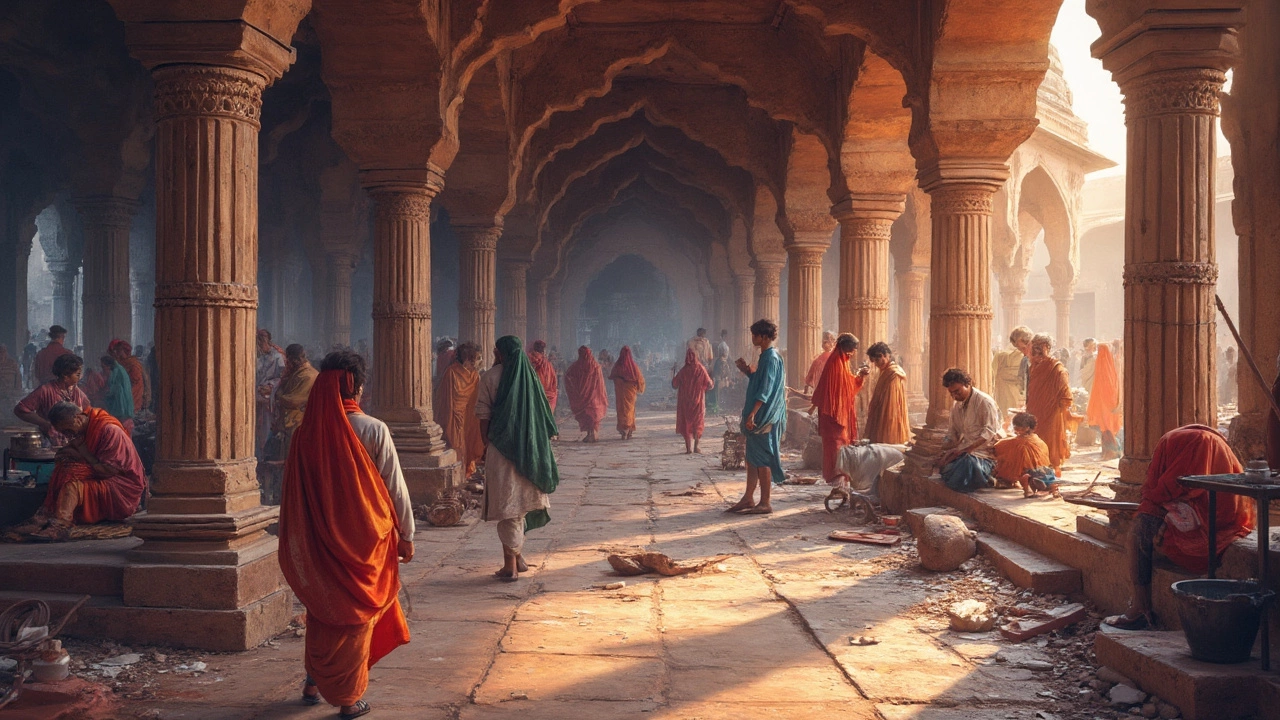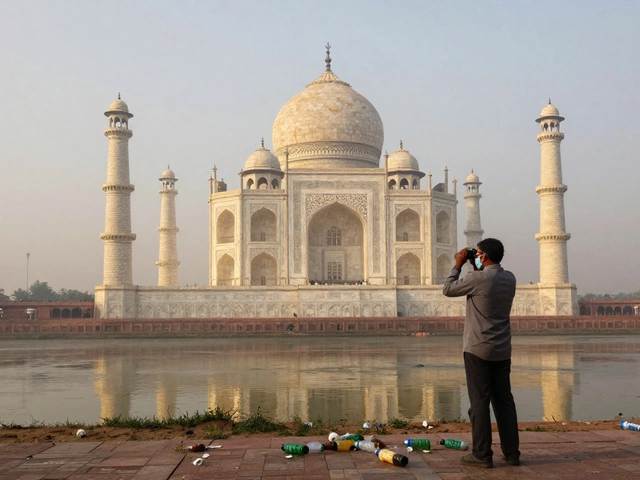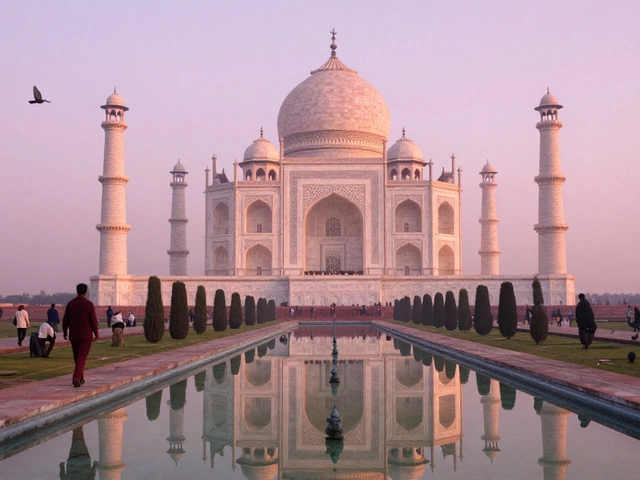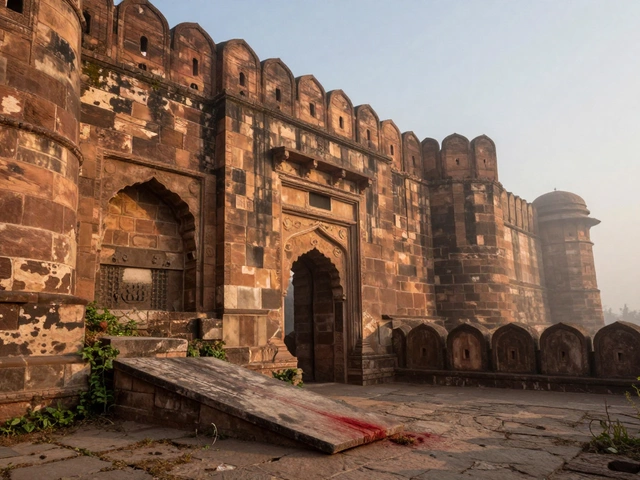Ever thought about which country tops the list with the most UNESCO World Heritage Sites? It’s Italy, with its mind-boggling 58 sites that include iconic landmarks like the Colosseum and the historic city of Venice. But you might be surprised to know that India isn't too far behind, playing host to over 40 of these globally revered sites.
India's rich cultural tapestry ensures countless spots worthy of the World Heritage tag. From the towering elegance of the Taj Mahal to the sophisticated ruins of Hampi, India bursts with stories waiting to be told and explored.
Wondering why these places matter? Heritage sites aren't just pretty locations; they're a peek into human history, showcasing artistic, architectural, and cultural feats that have stood the test of time. They're crucial for preserving our past and enriching our future understanding.
- Introduction to World Heritage Sites
- The Global Leader in Heritage Sites
- India's Role in the Heritage Scene
- Why These Sites are So Important
- Must-Visit Indian Heritage Sites
- Tips for Visiting World Heritage Sites
Introduction to World Heritage Sites
UNESCO World Heritage Sites are basically the VIPs of the world's natural and cultural locations. They're chosen for their outstanding value to humanity, whether it's breathtaking landscapes, architectural wonders, or cultural phenomena that deserve to be preserved and cherished.
But how does a site get on this prestigious list? It's a rigorous process where each site is evaluated based on ten strict criteria. Some need to show exceptional human creativity, while others provide outstanding examples of traditional human settlement. Sites are also judged on their natural beauty or ecological significance.
Did you know there are nearly 1,200 of these sites worldwide? The aim of UNESCO's program is to encourage the conservation and proper management of the world's heritage. This doesn't just benefit scholars and history buffs; it helps local economies through tourism and boosts communal pride where the sites are located.
Being crowned a World Heritage Site means more than just a pat on the back. It brings international attention and often, much-needed funding and expertise to preserve these treasures. It’s like having a protective cloak around areas that tell the story of our past, contribute to our understanding, and need a helping hand to survive into the future.
If you're into traveling or planning your next trip, these sites offer a super combination of awe and education. Their worldwide recognition means they have universal appeal, and visiting any world heritage site is a chance to be part of something much bigger—like stepping into a crunchy layer of global history.
The Global Leader in Heritage Sites
When it comes to the world heritage sites, Italy takes the crown. With its stunning landscapes, rich cultural history, and exceptional art, Italy stands proud with a whopping 58 UNESCO sites. These locations cover every nook of the nation, from its vibrant cities to serene countryside vistas.
Italy's Iconic Heritage Sites
Some of the most remarkable entries include the ancient city of Rome with its majestic Colosseum, a symbol of the Roman Empire's might and architectural genius. Venice, with its network of canals and breathtaking architecture, stands as a testament to human creativity and design mastery. Florence, known as the cradle of the Renaissance, houses the incredible Florence Cathedral and Uffizi Gallery, showcasing art that shaped the world.
More Than Just Eye Candy
These sites aren't just for looking at; they reveal Italy's deep-rooted impact on art, architecture, and culture. They're living lessons in history, reflecting the evolution of human endeavor over centuries. What makes them even more intriguing is how they continue to be integral to Italy's identity and economy, attracting millions of visitors each year.
Keeping Heritage Alive
Italy's success in preserving these sites serves as an inspiring model for other countries. The continuous efforts to maintain and protect these sites ensure that future generations can enjoy and learn from them. As you explore these places, you're not just sightseeing; you're stepping into pages of history that offer both inspiration and insight.
The immense popularity of these sites underscores the universal appeal and importance of cultural preservation in our rapidly changing world.
India's Role in the Heritage Scene
India, a country with deep roots in history and culture, is a significant player on the UNESCO World Heritage map. Currently, India boasts 42 world heritage sites, placing it among the top five countries with the most such sites. This recognition highlights India's diverse cultural and natural wonders.
Among these sites, you'll find a mix of ancient temples, majestic forts, and bustling cities with a wealth of stories to share. The heritage sites India offers are like open books filled with tales of civilization, religion, and trade that flourished over centuries.
The Cultural Marvels
India's cultural contributions include the infamous Taj Mahal in Agra, a testament to love and Mughal architecture. The historic city of Jaipur, known for its unique planning and vibrant architecture, is another jewel in India's crown.
The rock shelters of Bhimbetka provide some of the earliest traces of human life in India, with paintings dating back thousands of years. These sites don't just display artistic value but are crucial for understanding early human history.
The Natural Wonders
On the natural front, India shines with sites like the Western Ghats, a biodiversity hotspot housing many endemic species. The Sundarbans National Park, home to the Bengal tiger, is another awe-inspiring natural site conserving astonishing ecological diversity.
India's Growing Heritage List
India's list of UNESCO sites is always growing. The great thing is, each newly added site not only ensures global recognition but also heightens conservation efforts, drawing tourists and historians alike to learn and appreciate even more.
This dedication to preserving the past while stepping into the future makes India a pivotal player on the world heritage stage.

Why These Sites are So Important
World Heritage Sites hold a special place in our world for a few really good reasons. They symbolize the diverse beauty and history that different countries, like India, bring to the table.
Preserving History
These sites serve as windows into the past. Whether it’s the intricate carvings of the Ajanta Caves or the ancient architecture of Jaipur City, they help us understand societies long gone. It’s like reading a history book, but way cooler!
Cultural Significance
A lot of these sites play a big role in cultural identity. Take, for example, the stunning landscape of the Sundarbans National Park. It’s not only beautiful but also tied to many aspects of local life and beliefs.
Tourism and Economy
There’s no denying that these world heritage sites boost tourism, which in turn helps local economies. Just imagine the bustling bazaars around India’s heritage sites, packed with eager tourists. This influx provides jobs and opportunities for local communities.
Nurturing Biodiversity
Not all sites are about history. Some like the Kaziranga National Park protect unique ecosystems and wildlife. These spots are crucial for conservation efforts.
| Country | Number of UNESCO Sites |
|---|---|
| Italy | 58 |
| China | 56 |
| India | 40+ |
This diverse collection across countries shows how vital it is to preserve and cherish our world’s treasures.
Must-Visit Indian Heritage Sites
India, with its tapestry of cultures and traditions, offers some of the most spectacular world heritage sites. Whether you're a history buff or just someone looking to explore intriguing places, India's heritage sites are a goldmine of experiences.
The Taj Mahal: Love Set in Stone
Let's start with the Taj Mahal. It's not just a mausoleum but a testament to love, built by Emperor Shah Jahan in memory of his wife Mumtaz Mahal. This stunning white marble structure, often considered the jewel of Muslim art in India, is an essential part of any heritage tour.
Hampi: A Portal to the Past
Then there's Hampi, a city that seems frozen in time with its sprawling temple complexes and ancient ruins. Once the center of the Vijayanagara Empire, Hampi's landscape is dotted with boulders and palaces making it an adventurer's paradise.
Jaipur City: The Pink Marvel
Jaipur, known as the Pink City, stood out as one of India's proud UNESCO sites for its architecture and planning that dates back to 1727. The city is a heady mix of forts, such as the Amber Fort, and bustling bazaars where you can shop till you drop.
Qutub Minar: Soaring History
Don't miss the Qutub Minar in Delhi, the world’s tallest brick minaret. Begun in 1193, it's a prime example of Indo-Islamic architecture. The surrounding archaeological area makes this place even more intriguing to explore.
Extra Tips for Heritage Explorers
- Visit these sites during the off-peak seasons to avoid crowds and soak in the atmosphere.
- Always check for any conservation efforts or restrictions to ensure a hassle-free visit.
- If you're interested in detailed history, guided tours can be invaluable.
Tips for Visiting World Heritage Sites
Heading to explore some world heritage sites? It's a great way to dive into history and culture! But before you start packing, there's a few things you should know to make the most out of your visit.
Plan Ahead
Some heritage sites, especially the popular ones, get crowded really quickly. Consider booking tickets in advance if required, and try visiting during off-peak hours to enjoy a more relaxed experience. If you're heading to a specific site in India, checking the local weather can also save you from an unexpected weather mishap.
Respect the Rules
Each World Heritage Site in India and around the world has its own set of rules to preserve its condition. Look out for signage regarding dos and don'ts. Remember not to touch artifacts, climb on structures, or use flash photography if prohibited. These rules help keep the sites preserved for future generations.
Guided Tours
Considering a guided tour can be worthwhile. While you can definitely explore on your own, a knowledgeable guide can provide insights and stories you wouldn't hear otherwise. It's a great way to delve deeper into the significance of these sites.
Support Local Economy
Buying from local vendors near the site can have a positive impact. You're not just getting a unique souvenir, but you’re also supporting the community that lives around these historic places.
Stay Safe
Keep an eye on your belongings, especially in crowded areas. It's important to stay hydrated, wear comfortable clothes, and always carry some local currency for unexpected expenses.
Sustainability Check
Practice eco-friendly tourism by avoiding littering and using resources responsibly. Bring a reusable water bottle, and choose public transport when possible to reduce your carbon footprint while visiting UNESCO sites.
With these tips in mind, your adventure to these heritage tourism spots will be an enriching and enjoyable experience!






